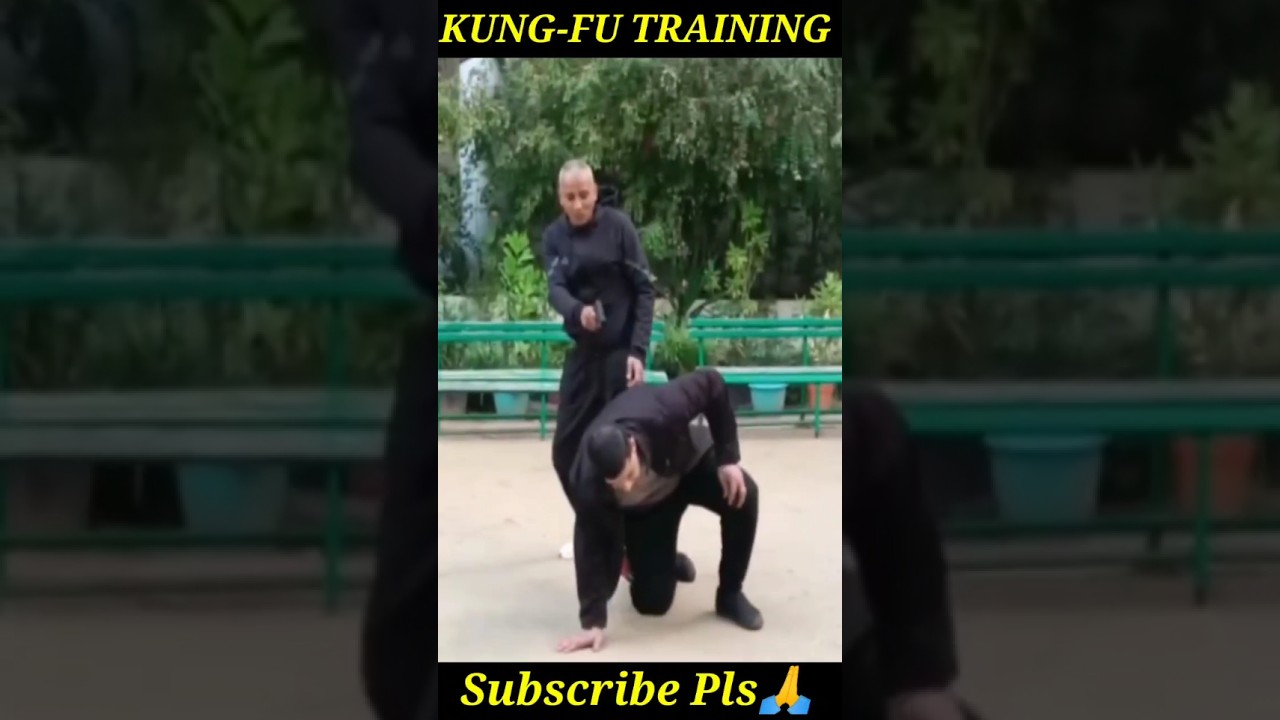Womens Self Defense
Navigating the Complexities of Weapon Carry Laws Across Different States

In the United States, the right to bear arms is enshrined in the Second Amendment to the Constitution. However, the complexities of weapon carry laws can vary dramatically from state to state. This article aims to demystify these laws and provide an overview for individuals who wish to navigate this intricate landscape.
Understanding the Basics
Types of Carry Permits
-
Open Carry: This allows individuals to carry firearms visibly in public. Some states require permits, while others do not.
-
Concealed Carry: This refers to carrying a firearm in a hidden manner. Most states require a permit, and the laws governing who can obtain a permit and under what conditions vary widely.
- No Permit Required: Some states, known as ‘constitutional carry’ states, do not require a permit for either open or concealed carry.
Key Factors Affecting Carry Laws
-
State Regulations: Each state sets its own laws regarding the possession, carry, and use of firearms. This can encompass everything from permitting processes to restrictions on certain types of weapons.
-
Local Ordinances: Even within states, cities or counties may have their own regulations that further restrict carrying.
- Reciprocity: Some states have reciprocity agreements that recognize each other’s carry permits. This means that carrying a concealed weapon from a state with a valid permit may be legal in another state.
The Variability of Laws
By Region
Laws can differ significantly in various regions of the U.S.
-
Northeast: States like New York and New Jersey have strict regulations, often requiring extensive background checks, training, and justification for obtaining a carry permit.
-
South: Southern states such as Texas and Florida have more permissive laws regarding open and concealed carry, often promoting a culture of gun ownership.
-
West: States like California impose strict regulations around open carry, while others like Arizona facilitate more lenient open carry laws.
- Midwest: States vary widely, with places like Illinois historically being harder to navigate due to stricter laws, although they have moved towards more permissive regulations in recent years.
Permits and Training Requirements
In most states, obtaining a permit to carry firearms requires completing a training course. However, the extent of this training can vary:
-
Length of Training: Some states may require only a few hours of training, while others may mandate comprehensive courses covering various aspects of firearm safety and responsibility.
- Background Checks: Most states will conduct some form of background check, but the details can differ. Some states have ‘shall issue’ laws, necessitating the issuance of a permit if one meets basic criteria, while others have ‘may issue’ laws, allowing discretion at the local level.
The Impact of Federal Laws
While state laws dominate the landscape of carry permit regulations, federal laws also play a role. The Gun Control Act of 1968 and the National Firearms Act of 1934 are examples of federal legislation that set certain standards and restrictions, particularly around firearm sales and ownership.
However, states maintain their authority to regulate carry laws within their borders, leading to the patchwork effect seen across the nation.
A Guide for Responsible Gun Owners
-
Stay Informed: Gun owners should familiarize themselves with the laws of both their home state and any states they plan to visit. Websites of state law enforcement agencies or legal organizations can provide helpful resources.
-
Permit Requirements: Before traveling, check if the state you’re visiting recognizes your permit and what additional requirements they may have.
-
Understand Local Laws: Beyond state regulations, local laws can impose additional restrictions, so research on a city or county level is essential.
- Respect Authority: Always comply with law enforcement and local regulations regarding carrying weapons, and be prepared to present proof of your permit if required.
Conclusion
Navigating weapon carry laws in the U.S. necessitates a careful approach to understanding the intricate legal landscape. As states continue to modernize and alter their laws, staying informed is crucial for responsible gun ownership. Whether you’re a seasoned gun owner or a first-time permit seeker, understanding the nuances of weapon carry laws will empower you to make safer and more informed choices.
Womens Self Defense
Gun shots 👊👊#kungfu #selfdefensetechniques #shorts#shortsviral #fighter #selfdefense #martialarts

Round Kick #kungfu #selfdefensetechniques #shorts#shortsviral #fighter #selfdefense #martialarts Your Quries:- self …
source
Womens Self Defense
Legalities and Limitations: What You Need to Know Before Using Defense Sprays

Legalities and Limitations: What You Need to Know Before Using Defense Sprays
In today’s uncertain world, personal safety has become a paramount concern for many individuals. As a result, personal defense tools, such as pepper spray and other defense sprays, have gained popularity. However, while these sprays can provide a sense of security, it’s essential to understand the legalities and limitations surrounding their use. This article delves into crucial factors you need to consider before using defense sprays.
Understanding Defense Sprays
Defense sprays typically include substances like pepper spray, mace, and tear gas. They are designed to incapacitate an attacker, allowing the victim to escape. The effectiveness of these sprays largely depends on their formulation and delivery mechanism. However, their legal status can vary significantly based on local, state, and federal laws.
Legal Considerations
-
State and Local Laws
- Permitted Use: Many states allow the use of defense sprays for self-defense; however, laws can differ dramatically. Some states may require permits, while others may impose restrictions on the types or concentrations of allowed sprays.
- Prohibited Areas: Certain places, such as airports, government buildings, and schools, often have strict laws against carrying defense sprays. Familiarizing yourself with local regulations is crucial to avoid legal repercussions.
-
Age Restrictions
- Many states impose age limitations on the purchase and possession of defense sprays. Generally, individuals must be at least 18 years old to buy pepper spray. Parents should also be cautious if they are considering giving such items to minors.
-
Use of Force Laws
- The legality of using defense sprays also depends on the “use of force” laws in your location. Self-defense laws vary widely; some allow for the use of force only if there is an immediate threat, while others provide more leeway. Justifiable use must align with local self-defense laws.
-
Content of the Spray
- States may regulate the active ingredients in defense sprays. For example, some locales may allow only certain capsaicin concentrations in pepper sprays. It’s essential to ensure that your chosen spray complies with these regulations.
- Misuse Provisions
- The misuse of defense sprays, even in non-threatening situations, can lead to criminal charges, including assault or battery. Always exercise caution and consider retreating first when faced with confrontation.
Limitations of Defense Sprays
-
Effectiveness
- While defense sprays can be effective, they are not foolproof. Conditions such as wind, rain, and distance can impact their efficacy. Additionally, individuals under the influence of drugs or alcohol may not be as affected, reducing the effectiveness of the spray.
-
Legal Accountability
- Using a defense spray can result in legal consequences, even if used in self-defense. If a situation escalates, you may face charges if the use of your defense spray is deemed excessive. Always be prepared for potential legal scrutiny following its use.
-
Non-Lethality vs. Lethality
- Although marketed as non-lethal, defense sprays can cause severe harm or even death in extreme cases, particularly when used against vulnerable individuals or in confined spaces. Understanding this risk is essential when considering your personal safety options.
- Physical Condition
- Age, physical condition, or medical conditions of the users can also play a role in how effective the spray is and how individuals might react post-spray. For instance, individuals with respiratory issues might face severe complications if sprayed.
Conclusion
While defense sprays can enhance personal safety, understanding the legalities and potential limitations is crucial before relying on them for self-defense. Always familiarize yourself with local laws and regulations, and consider practical implications regarding their use. Educate yourself about personal safety strategies, and remember, the primary goal is to avoid confrontation whenever possible. Prioritize your safety, but also be aware of the responsibilities that come with carrying defense tools.
Womens Self Defense
The Importance of Creating a Safety Culture in the Workplace
Article Title: Empowering Yourself: Essential Self-Defense Techniques Every Woman Should Know
Hello, ladies! I’m Jade Tripp, and I’m here to empower you with the essential self-defense techniques that can give you confidence and a sense of security in your everyday life. It’s important for every woman to feel empowered to protect herself, and I want to share some practical tips that have proven effective in various situations.
Why Self-Defense is Important
Whether you’re walking home at night, traveling alone, or just moving through your daily routine, knowing how to defend yourself can be a game changer. Self-defense isn’t just about physical techniques; it’s also about awareness, confidence, and preparation.
Situational Awareness: Your First Line of Defense
Before we dive into physical techniques, let’s talk about awareness. Situational awareness can often prevent dangerous situations from arising. Here are a few practical tips to sharpen your awareness:
- Stay Alert: Keep your phone in your pocket while walking. Being engrossed in your phone can distract you from your surroundings.
- Use Your Instincts: Trust your gut. If something feels off in a situation, don’t hesitate to leave.
- Identify Exits: When you enter a new space, take a moment to look for exits. This is especially important in crowded places or unfamiliar settings.
Basic Physical Techniques
While situational awareness is essential, knowing how to physically defend yourself can make a world of difference. Here are a few techniques that are practical and easy to learn:
-
The Palm Strike: This technique is effective against attackers. Strike upward with the base of your palm to the attacker’s nose or chin. It’s simple but powerful!
Example: A personal trainer in San Francisco recently shared how she used a palm strike to fend off an assailant while jogging in a park. She practiced this technique in self-defense workshops and applied her training instinctively.
-
Knee Strike: If someone is too close for comfort, a well-placed knee strike to the groin can disable an attacker.
-
Escape from Wrist Grabs: If someone grabs your wrist, use your body weight to pull away. Rotate your wrist towards the assailant’s thumb while stepping back. This technique makes it difficult for the attacker to maintain their grip.
- Screaming: Sometimes the best defense is getting attention. Don’t be afraid to yell for help. “Fire!” can often get more attention than “Help!”
Building Confidence Through Practice
One of the most important aspects of self-defense is practice. Consider enrolling in a self-defense class in your area. Many communities offer workshops specifically for women, where you can learn techniques in a supportive environment.
Real Example: In Chicago, the local “Women’s Empowerment Project” provides classes that emphasize practical techniques combined with mental conditioning. Many graduates have reported feeling more empowered and confident in their daily lives after attending these classes.
The Power of Community
As women, we often uplift each other through shared experiences. Finding a supportive community can make your self-defense journey even more empowering. Join clubs, attend workshops, or find online forums where you can share experiences, challenges, and successes.
Example: A group of women in Austin created a "Self-Defense Sisterhood" group, where they meet weekly to practice techniques and encourage one another. This supportive environment fosters not only skills but deep friendships.
Resources for Further Learning
Here are some resources where you can learn more about self-defense and personal protection:
- Books: Look for “The Gift of Fear” by Gavin de Becker, which teaches about intuition and self-defense strategies.
- YouTube: Channels like “Women’s Self Defense Network” offer tutorials and demonstrations.
- Local Gyms: Many gyms and martial arts studios offer classes specifically geared towards women. Check out Krav Maga, Brazilian Jiu-Jitsu, or basic self-defense classes.
Conclusion: Embrace Your Power
Remember, ladies, self-defense is about more than physical strength; it’s about mindset. Stand tall, be confident, and practice these techniques. You are capable of protecting yourself, and with knowledge, you’ll always have an advantage. Let’s empower one another — together, we can create safer communities for all women!
Stay safe, stay strong, and keep thriving!
Warm regards,
Jade Tripp
-

 Womens Self Defense10 months ago
Womens Self Defense10 months agoNew Legislation Empowers Women to Defend Themselves
-

 Self Defense News1 year ago
Self Defense News1 year agoShe was convicted of killing her abusive boyfriend. Now a Maple Grove woman is home awaiting a new trial.
-

 Self Defense News1 year ago
Self Defense News1 year agoSelf-Defense for All: The new Gracie Jiu-Jitsu Pasadena is for everyone | Online Features
-

 Womens Self Defense1 year ago
Womens Self Defense1 year agoTop 5 Self-Defense Techniques Every Woman Should Know
-

 Womens Fitness1 year ago
Womens Fitness1 year agoXtreme Bodyweight HIIT (Lots of Jumping!) | Joanna Soh (Fio Series)
-

 Womens Self Defense7 months ago
Womens Self Defense7 months agoUnderstanding State-by-State Variation in Self Defense Laws
-

 Womens Preparedness1 year ago
Womens Preparedness1 year ago10 essential skills for surviving in the great outdoors
-

 Womens Preparedness1 year ago
Womens Preparedness1 year agoEmpower Yourself: A Guide to Female Survival Planning





